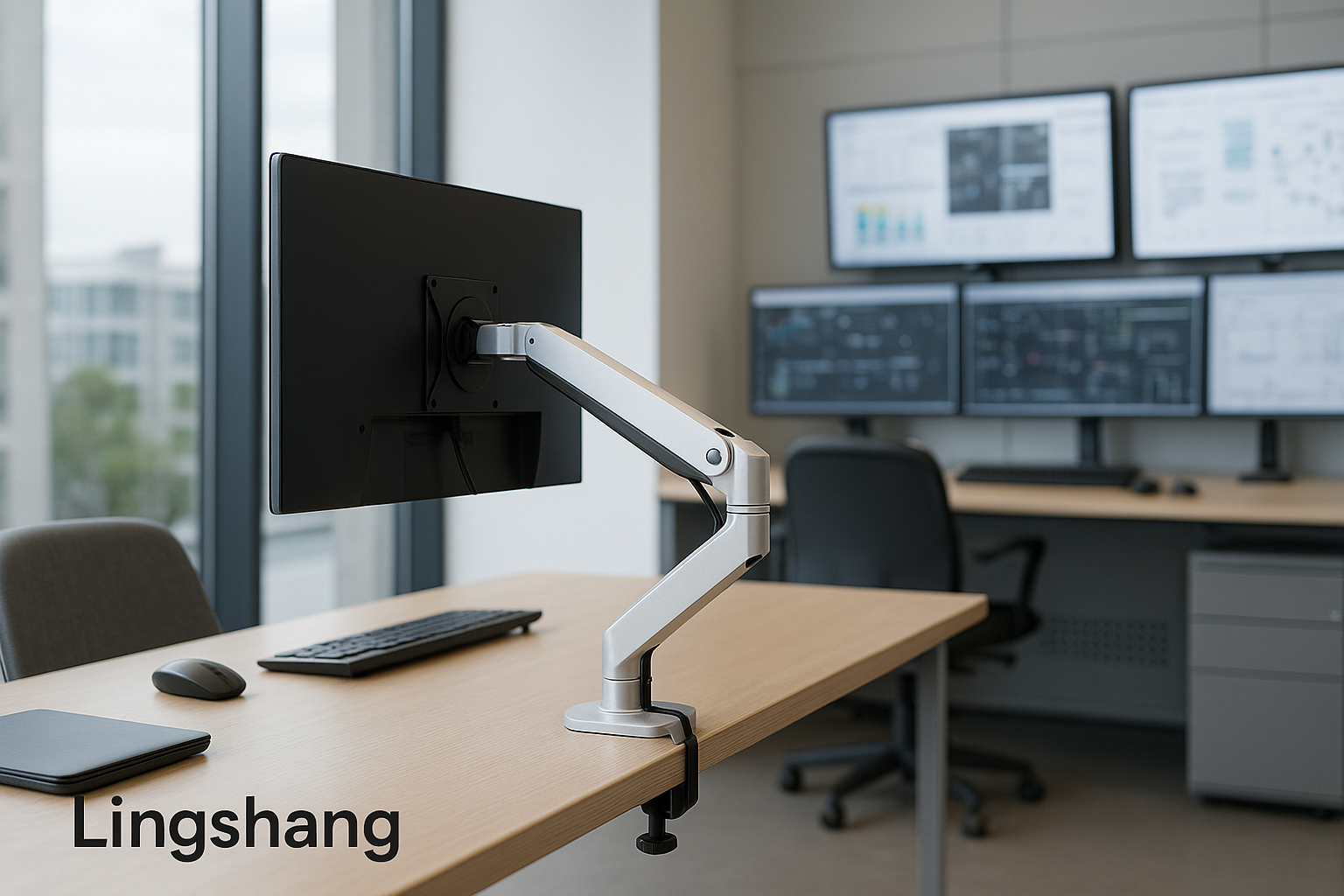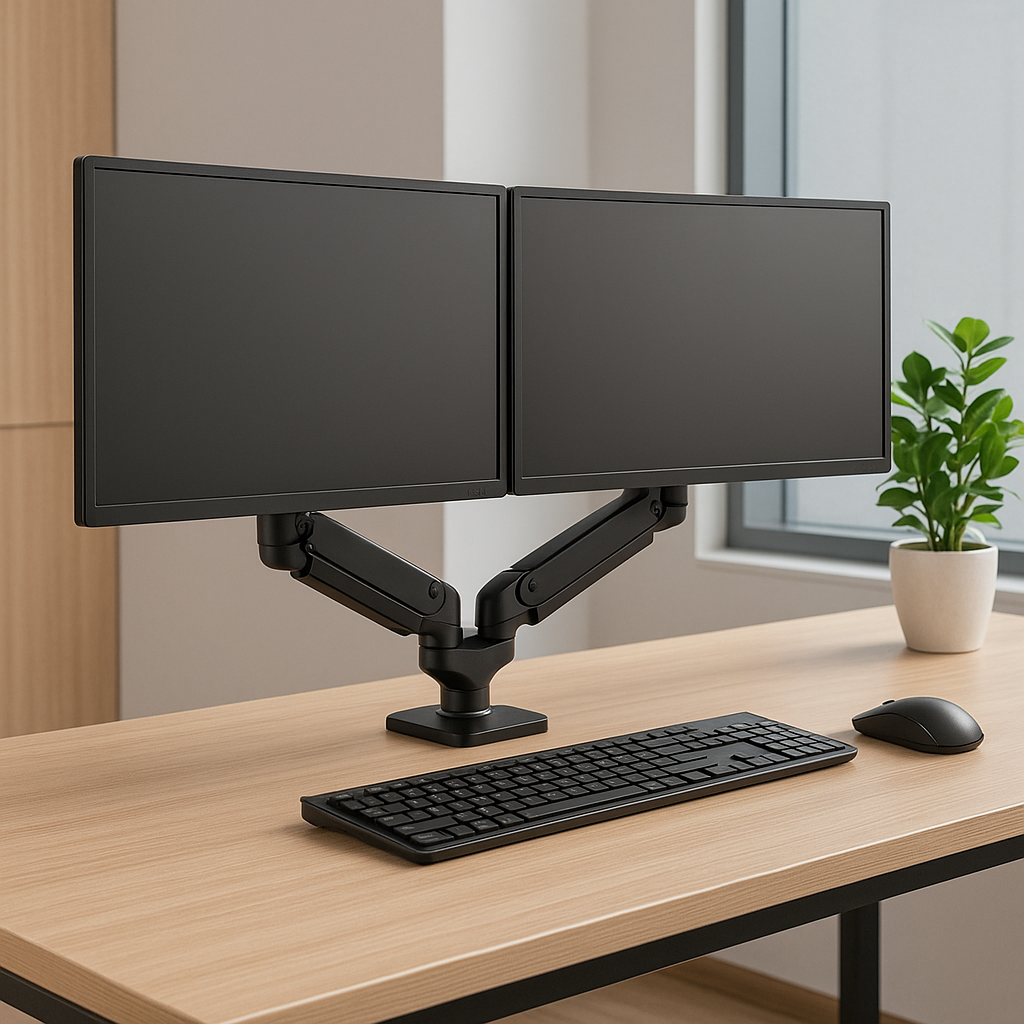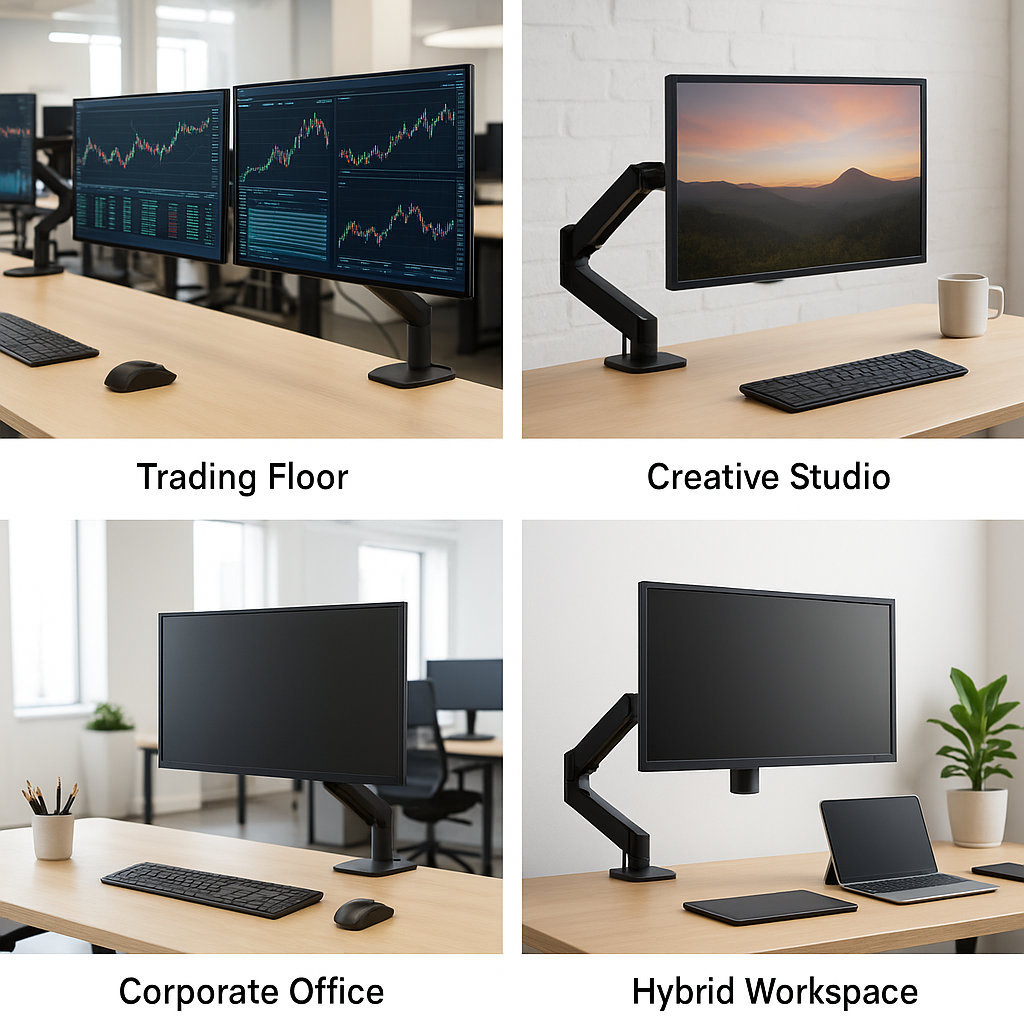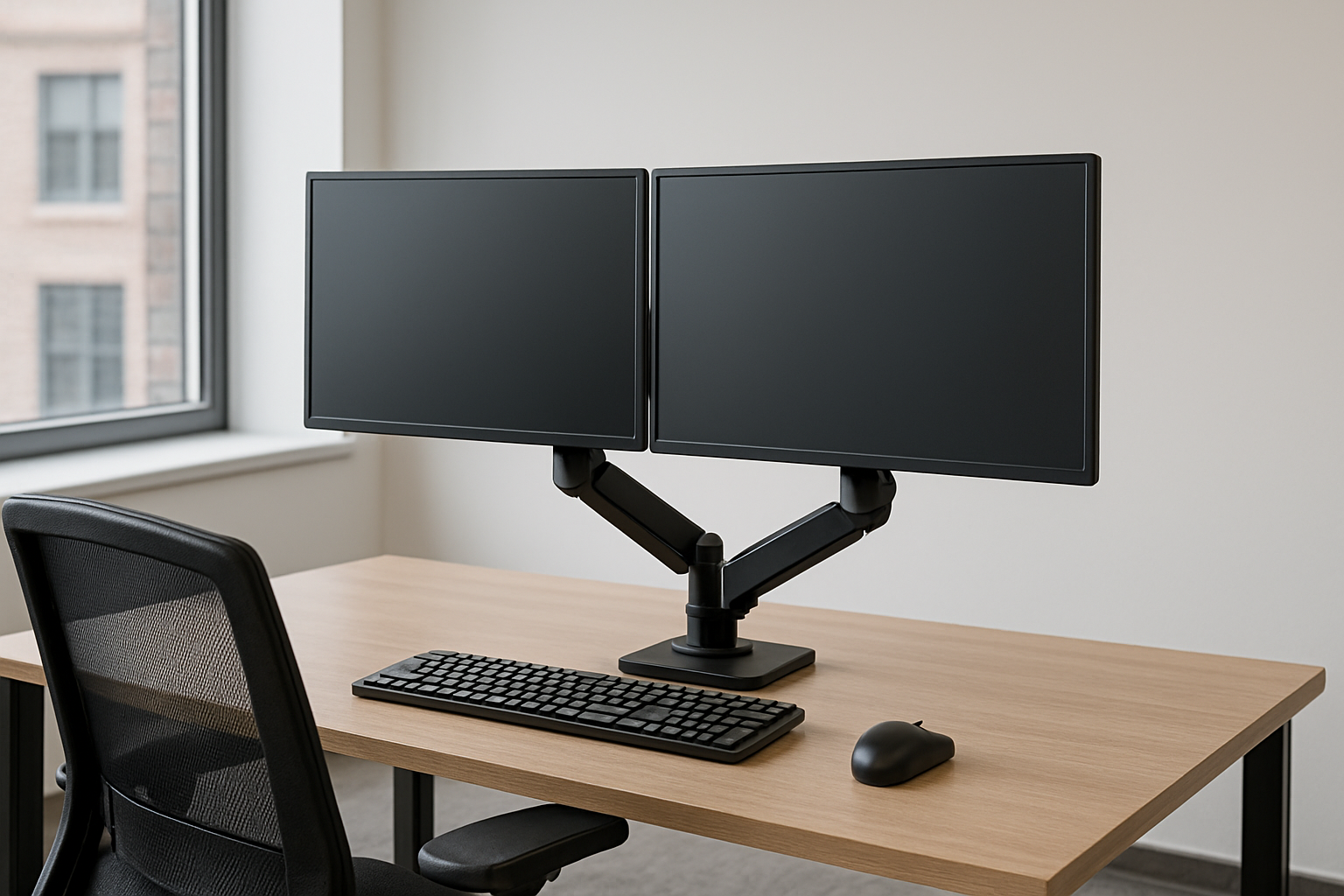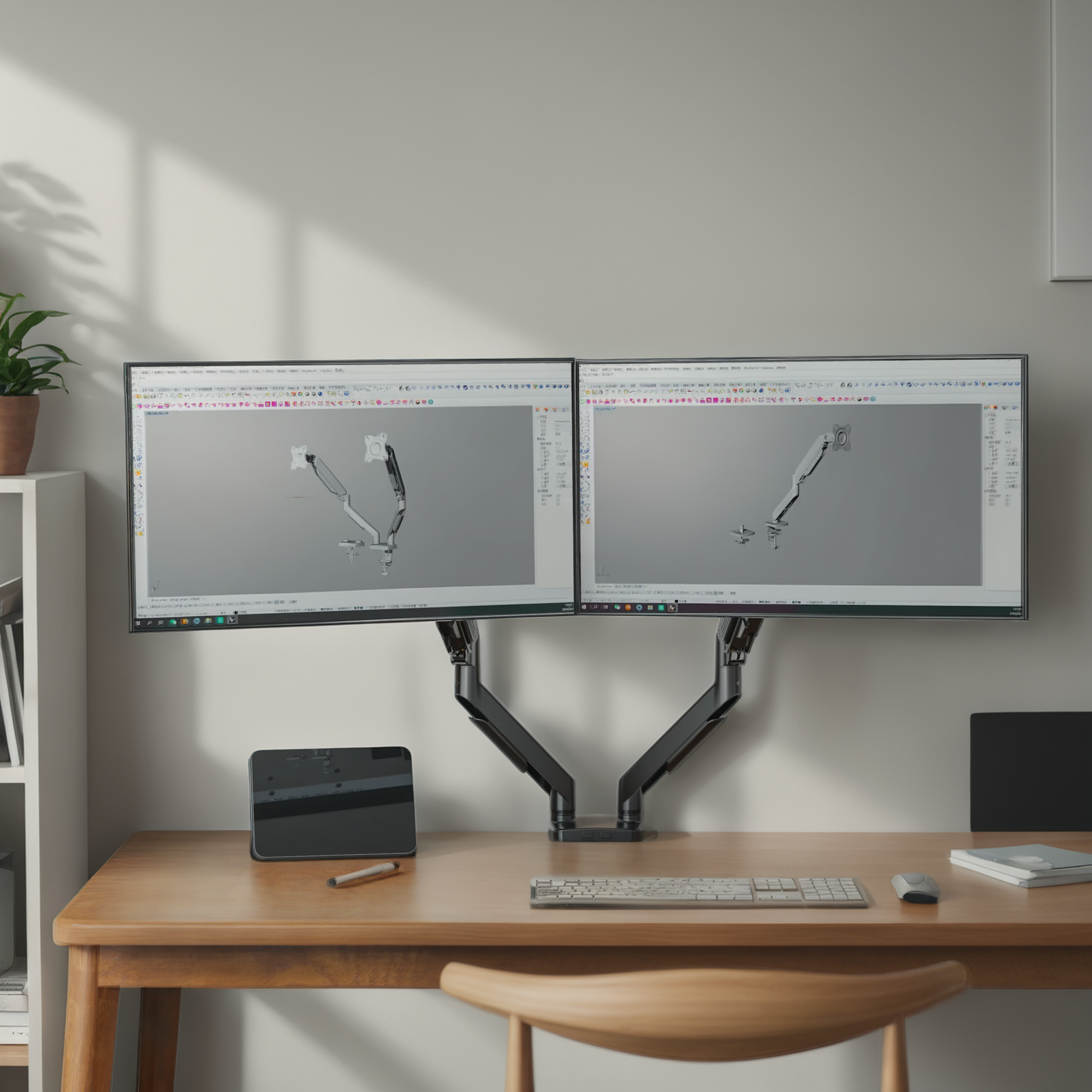
Why Dual Monitors Became an Enterprise Standard
According to a 2022 Jon Peddie Research report, employees using dual monitors increase productivity by 20–30% compared to single-screen setups. From financial analysts monitoring multiple data feeds to designers editing on one screen while previewing on another, dual-screen workstations are now a baseline requirement in modern enterprises.
But without proper support hardware, dual monitors introduce pain points:
-
Unstable setups leading to sagging screens.
-
Mismatched ergonomics when different teams use different arms.
-
Higher IT workload managing varied equipment models.
This is where wholesale procurement of dual monitor arms becomes a strategic move, solving not just ergonomic issues, but procurement and operational inefficiencies.
The Hidden Risks of Piecemeal Purchases
When companies rely on ad-hoc or retail purchases, problems multiply at scale:
-
Inconsistent workstation setups → employee discomfort and uneven productivity.
-
Excess costs → retail prices and higher replacement rates erode budgets.
-
Logistical complexity → multiple vendors, incompatible products, and delayed rollouts.
For enterprises with hundreds of workstations, these issues translate into lost hours, hidden costs, and compliance risks (e.g., not meeting OSHA or ISO ergonomic standards).
The Wholesale Advantage for ToB Procurement
1. Lower Unit Costs and Scalable Budgeting
Buying wholesale reduces per-unit cost by 25–40% on average. For a 500-workstation rollout, savings can reach six figures, freeing capital for other IT or facilities projects.
2. Standardized Deployments Across Sites
Procurement managers ensure every employee gets the same ergonomic experience. IT teams benefit from one product spec, simplifying installation, troubleshooting, and inventory control.
3. OEM/ODM Customization at Scale
Dual arms can be customized with company branding, cable management systems, or specific finishes to match office aesthetics—something retail channels rarely provide.
4. Compliance and Certification
Reliable wholesale suppliers provide ISO, CE, and RoHS certifications, ensuring arms meet global ergonomic and safety standards. This is especially vital for multinational deployments.
5. Supply Chain and Logistics Efficiency
Bulk orders streamline logistics with predictable delivery schedules—critical for office renovations or phased rollouts. Enterprises gain one point of accountability rather than juggling multiple vendors.
Use Cases
-
Financial Services – Trading desks with 24/7 uptime demand reinforced arms supporting dual ultra-wide monitors.
-
Creative Agencies – Editors and designers require seamless movement between collaboration screens and editing software.
-
Healthcare Facilities – Dual arms allow practitioners to display diagnostic images alongside patient records.
-
Corporate Headquarters – Standardized dual setups reduce IT support tickets and improve cross-department workflow consistency.
Procurement Checklist for Enterprises
Before committing to wholesale dual monitor arms, procurement teams should:
-
Validate weight and VESA compatibility for current and future monitors.
-
Request durability and lifecycle testing data.
-
Ensure independent adjustability (each screen moves separately).
-
Confirm supplier provides spare parts, warranties, and technical guides.
-
Align purchases with sustainability goals by selecting recyclable, RoHS-compliant materials.
Why Lingshang Is the Trusted Partner for Dual Monitor Arm Wholesale
With 15+ years of ergonomic hardware expertise, Lingshang delivers wholesale solutions designed for enterprise-level performance. Our advantages:
-
Certified compliance (ISO, CE, RoHS) for global deployment.
-
OEM/ODM services for brand-specific customization.
-
Scalable logistics to support phased or international rollouts.
-
After-sales support with spare parts and technical guidance.
Explore Lingshang’s wholesale dual monitor arm solutions or contact us for enterprise procurement plans.

